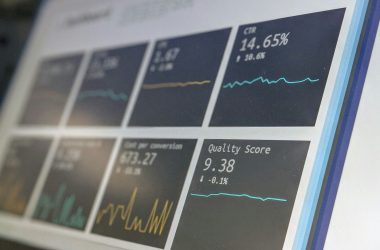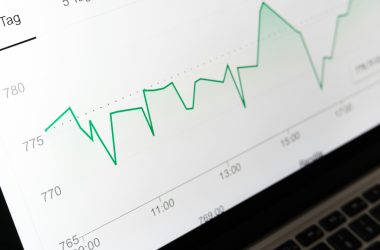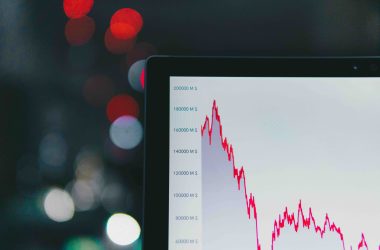Introduction
In the ever-changing world of trading, staying informed about economic trends is crucial for making sound decisions. Economic indicators provide valuable insights into a country’s economic performance, helping traders predict market movements and identify opportunities. This guide delves into the key economic indicators every trader should understand and watch closely.
The Importance of Economic Indicators in Trading
Economic indicators are vital tools for traders, offering a glimpse into the health and direction of an economy. These statistical reports reflect various aspects of economic performance, such as GDP, inflation, employment, and consumer behavior. By analyzing these indicators, traders can identify trends, anticipate market shifts, and make informed decisions.
Types of Economic Indicators
There are three main types of economic indicators:
- Leading Indicators: Predict future economic trends. Examples include stock market returns, new business startups, and consumer sentiment surveys.
- Lagging Indicators: Reflect past economic performance. Common examples are unemployment rates, corporate profits, and GDP growth rates.
- Coincident Indicators: Mirror current economic conditions. Examples include retail sales, industrial production, and personal income levels.
Understanding these indicators helps traders forecast economic changes, adjust strategies, and reduce risks.
Demystifying Economic Indicators
Economic indicators are statistical data points that provide insights into the economic performance and future prospects of a country. These indicators can signal potential changes in the market, allowing traders to adjust their strategies accordingly.
Key Economic Indicators to Watch
GDP Growth Rate
The Gross Domestic Product (GDP) growth rate measures the overall economic output of a country. It indicates the pace at which an economy is growing or shrinking. A growing GDP signals a strong economy, while a decline indicates a recession. Quarterly and annual GDP reports provide crucial information for traders. Learn more about GDP growth.
Inflation Rate
The inflation rate measures the rate at which the general level of prices for goods and services is rising, and subsequently, purchasing power is falling. Central banks use this indicator to set monetary policy. High inflation can erode purchasing power, while low inflation may indicate economic stagnation. Explore inflation rates.
Unemployment Rate
The unemployment rate represents the percentage of the total labor force that is unemployed but actively seeking employment. A low unemployment rate signals a strong economy, while a high rate indicates economic weakness. This indicator provides insights into the health of the labor market. Understand unemployment rates.
Interest Rates
Interest rates, set by central banks, influence borrowing, spending, and investment. Higher interest rates generally slow economic growth by making borrowing more expensive, while lower rates stimulate growth by making borrowing cheaper. Monitoring central bank policies and interest rate changes is crucial for traders. Read about interest rates.
Consumer Confidence Index
The Consumer Confidence Index (CCI) measures the level of optimism that consumers feel about the overall state of the economy and their personal financial situation. A high index indicates a strong economy with confident consumers likely to spend more, while a low index signals caution. This indicator can predict future consumer spending trends. Learn about the Consumer Confidence Index.
Retail Sales
Retail sales data reflect consumer spending on goods and services. Strong retail sales indicate robust consumer demand, while weak sales suggest economic slowdown. This indicator is a key measure of economic health and consumer behavior. Explore retail sales.
Housing Starts
Housing starts measure the number of new residential construction projects begun in a given period. This indicator reflects the health of the housing market and broader economic conditions. Strong housing starts suggest economic growth and increased consumer confidence. Understand housing starts.
Manufacturing Production
Manufacturing production data measure the output of the industrial sector, including factories, mines, and utilities. This indicator provides insights into the strength of the manufacturing industry and overall economic activity. Learn about manufacturing production.
The Impact of Federal Reserve Speeches on Markets
The Federal Reserve (Fed) plays a crucial role in the economy, and its communications can significantly impact financial markets. The Fed’s statements, speeches, and press conferences provide insights into monetary policy decisions, economic outlook, and future interest rate changes.
Why Fed Speeches Matter
Fed speeches matter because they can signal future policy actions. Traders closely monitor these communications for clues about interest rate changes, quantitative easing measures, and economic forecasts. A single statement from a Fed official can lead to significant market volatility.
How to Interpret Fed Speeches
- Watch for Key Phrases: Certain phrases and terms used by Fed officials can indicate policy changes. For example, phrases like “accommodative policy” or “tightening” can signal future interest rate decisions.
- Monitor Market Reactions: Immediate market reactions to Fed speeches can provide insights into how traders interpret the statements. Large movements in stock prices, bond yields, and currency values can indicate market sentiment.
- Understand the Context: Fed speeches should be analyzed within the broader economic context. Consider current economic conditions, recent data releases, and previous Fed statements to fully understand the implications.
Examples of Fed Speech Impacts
- Interest Rate Hikes: If a Fed official hints at upcoming interest rate hikes due to rising inflation, markets may react with increased volatility. Stocks might decline as borrowing costs rise, while the dollar could strengthen.
- Economic Outlook: Positive statements about economic growth can boost market confidence, leading to stock market rallies. Conversely, warnings about economic slowdowns can cause market declines.
- Policy Changes: Announcements about changes in quantitative easing or other monetary policies can lead to significant market movements. For example, indications of reducing asset purchases (tapering) can impact bond yields and stock prices.
How to Analyze Economic Indicators
Analyzing economic indicators involves understanding their implications for the economy and markets. Here are some tips for effectively analyzing these indicators:
Understand the Context
Economic indicators should be analyzed in the context of the overall economic environment. For example, a rise in the unemployment rate might have different implications during a recession compared to during a period of economic growth.
Look for Trends
Trends in economic indicators can provide valuable insights. For example, a consistent increase in the GDP growth rate might signal sustained economic expansion, while a steady rise in inflation could indicate overheating in the economy.
Compare with Expectations
Economic data is often released with expectations from economists and analysts. Comparing actual results with these expectations can provide insights into market reactions. For example, if GDP growth exceeds expectations, it might lead to a bullish market response.
Use Multiple Indicators
Relying on a single economic indicator can be misleading. Using a combination of indicators provides a more comprehensive view of the economy. For instance, analyzing GDP growth alongside unemployment rates and inflation can offer a clearer picture of economic health.
Monitor Central Bank Actions
Central banks play a crucial role in the economy by setting interest rates and implementing monetary policy. Monitoring central bank actions and statements can provide insights into future economic conditions and market movements.
Practical Application for Traders
Economic indicators are invaluable tools for traders. Here are some ways to use them in trading:
Anticipating Market Movements
Economic indicators can help traders anticipate market movements. For example, if inflation is rising faster than expected, traders might anticipate that the central bank will raise interest rates, leading to a potential decline in stock prices.
Identifying Opportunities
Economic indicators can help identify trading opportunities. For example, strong GDP growth might signal a bullish market, leading traders to consider buying stocks. Conversely, rising unemployment might indicate economic weakness, prompting traders to short sell.
Managing Risk
Understanding economic indicators can help traders manage risk. For example, if economic indicators suggest a potential recession, traders might reduce exposure to high-risk assets and increase holdings in safer investments like bonds or gold.
Timing Trades
Economic indicators can assist in timing trades. For example, if retail sales data indicates strong consumer spending during the holiday season, traders might consider entering trades in retail stocks before the data is released.
How Sherlock’s Tools Can Enhance Your Trading
Sherlock’s innovative tools can help traders analyze economic indicators and make informed trading decisions. Here are a few examples:
Real-Time News Summaries with Sentiment Analysis
Sherlock’s AI-driven news summaries provide traders with a comprehensive overview of market-moving news, complete with sentiment analysis to help identify trends and biases. This tool ensures that traders stay informed about the latest developments and market sentiments, allowing them to make timely and informed decisions. Learn more about sentiment analysis.
Daily Stock Picks
Sherlock’s daily stock picks integrate fundamental, technical, and social analysis to identify high-potential trading opportunities. This feature provides traders with actionable trading ideas based on a comprehensive analysis of multiple factors, helping them identify stocks with the best potential for growth. Explore how AI selects stocks.
Technical Analysis, Fundamental Analysis, and Levels Analysis Tools
Sherlock offers a range of analysis tools to provide traders with a detailed understanding of market trends, company performance, and technical patterns. These tools help traders make data-driven decisions and enhance their trading strategies. Learn about technical analysis.
Centralized Discovery and Analysis Platform
Sherlock’s platform streamlines the trading process, reducing complexity and empowering traders to make informed decisions. With all the necessary tools and information in one place, traders can easily access the insights they need to succeed. Discover more about AI in trading.
Conclusion
Analyzing economic indicators is crucial for making informed trading decisions. By understanding key economic indicators such as GDP growth, inflation rates, unemployment rates, interest rates, consumer confidence, retail sales, housing starts, and manufacturing production, traders can gain valuable insights into economic performance and future market movements. Additionally, paying attention to Federal Reserve speeches can provide critical clues about future monetary policy and market direction.
Using these indicators in conjunction with other analysis methods can help traders anticipate trends, identify opportunities, manage risk, and time their trades effectively. Economic indicators provide a roadmap for navigating the complex and dynamic world of trading. By staying informed and analyzing these key metrics, traders can enhance their strategies, make more informed decisions, and ultimately achieve their trading goals.





